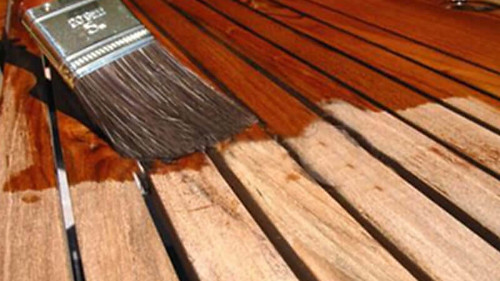F every survey. Wxn Wilcoxon signed-rank test (http:vassarstats .netwilcoxon.html). b Boldface indicates significance at much less than or equal to p campuses, course “learning objectives” were not developed by course faculty but mandated by a state critique board. The narrowness or breadth of such objectives (e.g big topics inside a single term) influenced how Build could be implemented. Some implementers reported a wide variety in the readiness of their first-year students for college-level operate, or noted their students’ sporadic attendance as a buy Org-26576 problem. The seven institutions of this study supplied a little window into the diversity of community colleges, when it comes to student body, institutional sources, curricular structures, and physical spaces. On some campuses, PubMed ID:http://www.ncbi.nlm.nih.gov/pubmed/19395653?dopt=Abstract IRB boards were absent, or IRB processes have been ill defined, rising the obstacles facing -yr faculty wishing to take part in an education study. Unexpected nonsupportive reactions from administrators have been a issue for certain implementers. Some -yr faculty essential dean or chair approval for any curricular adjustments; deans and chairs didn’t always agree. In some situations, we saw robust administrative help for the implementer. Recent research have reported constructive gains created by -yr science faculty participating in qualified development workshops  (e.gSTAR; Gregg et al) and programs that train -yr faculty within the use of course-based study experiences for introductory science courses (Wolkow et al). General, our findings lend further support for calls to expand expert improvement opportunities for community college faculty. Moreover, we hope that the experiences in the -yr implementers will encourage other -yr faculty to consider investing in the Make pedagogy.CREATE-Based Community College CoursesCognitive Tests. Students’ UAMC00039 (dihydrochloride) chemical information experimental design and style capacity has been little studied to date at the neighborhood college level and is really a challenging situation for students at -yr colleges (Dasgupta et al). In preceding Produce courses at a -year MSI, each first-year and upper-level students made significant gains as measured by the EDAT (Gottesman and Hoskins,), as did the pooled -yr cohort within the present study. We hypothesize that gains in experimental”course ” of a three-course introductory biology sequence. This predicament proved difficult for the implementer, as the student-centered Create format contrasted sharply using the traditional style from the other two courses. On someTableStudent responses from OE survey questiona”How do you really feel overall concerning the Develop system as well as your science learning within this course, compared with other strategies of teaching you have got experienced” Constructive (“I liked Build much better than other teaching styles”) Damaging (“I like other ways superior than CREATE”) Neutral (no preference involving Develop and conventional teaching) Campus AllaTotal responsesb Statements have been coded as constructive, damaging, or neutral by two independent scorers, with discrepancies reconciled and scores averaged. Totals might not equal due to rounding. See Table for -yr course info. b Total of constructive, damaging or neutral comments; nine added “unclassified” statements didn’t address the query and have been deleted from the total pool. :ar, CBE–Life Sciences EducationCREATE Promotes Community College Gainsdesign capacity relate to the several experimental style and grant panel activities that characterize Make courses, as repetition and practice help learni.F every single survey. Wxn Wilcoxon signed-rank test (http:vassarstats .netwilcoxon.html). b Boldface indicates significance at less than or equal to p campuses, course “learning objectives” were not developed by course faculty but mandated by a state evaluation board. The narrowness or breadth of such objectives (e.g key subjects in a single term) influenced how Create might be implemented. Some implementers reported a wide variety within the readiness of their first-year students for college-level work, or noted their students’ sporadic attendance as an issue. The seven institutions of this study offered a compact window into the diversity of neighborhood colleges, in terms of student physique, institutional sources, curricular structures, and physical spaces. On some campuses, PubMed ID:http://www.ncbi.nlm.nih.gov/pubmed/19395653?dopt=Abstract IRB boards have been absent, or IRB processes have been ill defined, rising the obstacles facing -yr faculty wishing to take part in an education study. Unexpected nonsupportive reactions from administrators have been a issue for certain implementers. Some -yr faculty essential dean or chair approval for any curricular adjustments; deans and chairs did not generally agree. In some situations, we saw robust administrative support for the implementer. Current studies have reported good gains created by -yr science faculty participating in qualified development workshops (e.gSTAR; Gregg et al) and applications that train -yr faculty inside the use of course-based research experiences for introductory science courses (Wolkow et al). Overall, our findings lend additional help for calls to expand specialist improvement opportunities for community college faculty. In addition, we hope that the experiences of the -yr implementers will encourage other -yr faculty to consider investing in the Generate pedagogy.CREATE-Based Neighborhood College CoursesCognitive Tests. Students’ experimental design potential has been tiny studied to date in the community college level and is a challenging issue for students at -yr colleges (Dasgupta et al). In prior Develop courses at a -year MSI, both first-year and upper-level students produced important gains as measured by the EDAT (Gottesman and Hoskins,), as did the pooled -yr cohort inside the present study. We hypothesize that gains in experimental”course ” of a three-course introductory biology sequence.
(e.gSTAR; Gregg et al) and programs that train -yr faculty within the use of course-based study experiences for introductory science courses (Wolkow et al). General, our findings lend further support for calls to expand expert improvement opportunities for community college faculty. Moreover, we hope that the experiences in the -yr implementers will encourage other -yr faculty to consider investing in the Make pedagogy.CREATE-Based Community College CoursesCognitive Tests. Students’ UAMC00039 (dihydrochloride) chemical information experimental design and style capacity has been little studied to date at the neighborhood college level and is really a challenging situation for students at -yr colleges (Dasgupta et al). In preceding Produce courses at a -year MSI, each first-year and upper-level students made significant gains as measured by the EDAT (Gottesman and Hoskins,), as did the pooled -yr cohort within the present study. We hypothesize that gains in experimental”course ” of a three-course introductory biology sequence. This predicament proved difficult for the implementer, as the student-centered Create format contrasted sharply using the traditional style from the other two courses. On someTableStudent responses from OE survey questiona”How do you really feel overall concerning the Develop system as well as your science learning within this course, compared with other strategies of teaching you have got experienced” Constructive (“I liked Build much better than other teaching styles”) Damaging (“I like other ways superior than CREATE”) Neutral (no preference involving Develop and conventional teaching) Campus AllaTotal responsesb Statements have been coded as constructive, damaging, or neutral by two independent scorers, with discrepancies reconciled and scores averaged. Totals might not equal due to rounding. See Table for -yr course info. b Total of constructive, damaging or neutral comments; nine added “unclassified” statements didn’t address the query and have been deleted from the total pool. :ar, CBE–Life Sciences EducationCREATE Promotes Community College Gainsdesign capacity relate to the several experimental style and grant panel activities that characterize Make courses, as repetition and practice help learni.F every single survey. Wxn Wilcoxon signed-rank test (http:vassarstats .netwilcoxon.html). b Boldface indicates significance at less than or equal to p campuses, course “learning objectives” were not developed by course faculty but mandated by a state evaluation board. The narrowness or breadth of such objectives (e.g key subjects in a single term) influenced how Create might be implemented. Some implementers reported a wide variety within the readiness of their first-year students for college-level work, or noted their students’ sporadic attendance as an issue. The seven institutions of this study offered a compact window into the diversity of neighborhood colleges, in terms of student physique, institutional sources, curricular structures, and physical spaces. On some campuses, PubMed ID:http://www.ncbi.nlm.nih.gov/pubmed/19395653?dopt=Abstract IRB boards have been absent, or IRB processes have been ill defined, rising the obstacles facing -yr faculty wishing to take part in an education study. Unexpected nonsupportive reactions from administrators have been a issue for certain implementers. Some -yr faculty essential dean or chair approval for any curricular adjustments; deans and chairs did not generally agree. In some situations, we saw robust administrative support for the implementer. Current studies have reported good gains created by -yr science faculty participating in qualified development workshops (e.gSTAR; Gregg et al) and applications that train -yr faculty inside the use of course-based research experiences for introductory science courses (Wolkow et al). Overall, our findings lend additional help for calls to expand specialist improvement opportunities for community college faculty. In addition, we hope that the experiences of the -yr implementers will encourage other -yr faculty to consider investing in the Generate pedagogy.CREATE-Based Neighborhood College CoursesCognitive Tests. Students’ experimental design potential has been tiny studied to date in the community college level and is a challenging issue for students at -yr colleges (Dasgupta et al). In prior Develop courses at a -year MSI, both first-year and upper-level students produced important gains as measured by the EDAT (Gottesman and Hoskins,), as did the pooled -yr cohort inside the present study. We hypothesize that gains in experimental”course ” of a three-course introductory biology sequence.  This scenario proved challenging for the implementer, because the student-centered Create format contrasted sharply with all the conventional style on the other two courses. On someTableStudent responses from OE survey questiona”How do you feel overall regarding the Make strategy and your science learning in this course, compared with other ways of teaching you’ve experienced” Constructive (“I liked Make improved than other teaching styles”) Damaging (“I like other ways superior than CREATE”) Neutral (no preference between Create and traditional teaching) Campus AllaTotal responsesb Statements were coded as good, negative, or neutral by two independent scorers, with discrepancies reconciled and scores averaged. Totals might not equal as a result of rounding. See Table for -yr course info. b Total of positive, unfavorable or neutral comments; nine extra “unclassified” statements did not address the question and had been deleted from the total pool. :ar, CBE–Life Sciences EducationCREATE Promotes Community College Gainsdesign potential relate for the numerous experimental style and grant panel activities that characterize Build courses, as repetition and practice support learni.
This scenario proved challenging for the implementer, because the student-centered Create format contrasted sharply with all the conventional style on the other two courses. On someTableStudent responses from OE survey questiona”How do you feel overall regarding the Make strategy and your science learning in this course, compared with other ways of teaching you’ve experienced” Constructive (“I liked Make improved than other teaching styles”) Damaging (“I like other ways superior than CREATE”) Neutral (no preference between Create and traditional teaching) Campus AllaTotal responsesb Statements were coded as good, negative, or neutral by two independent scorers, with discrepancies reconciled and scores averaged. Totals might not equal as a result of rounding. See Table for -yr course info. b Total of positive, unfavorable or neutral comments; nine extra “unclassified” statements did not address the question and had been deleted from the total pool. :ar, CBE–Life Sciences EducationCREATE Promotes Community College Gainsdesign potential relate for the numerous experimental style and grant panel activities that characterize Build courses, as repetition and practice support learni.
